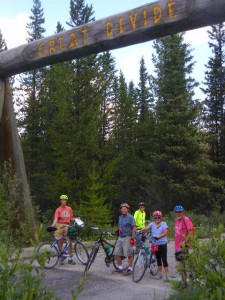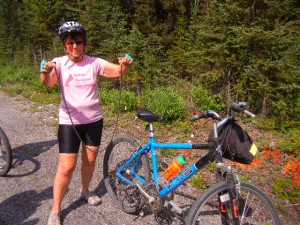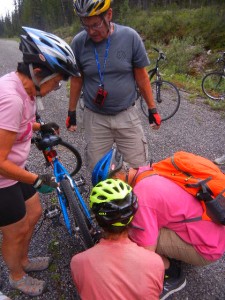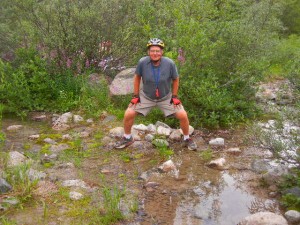28 July and 1 August: Before and after our visit to Canada’s Glacier National Park (to be described in the next post), we spent a couple of days in Yoho National Park in B.C. This park includes Kicking Horse Pass, part of the route selected by the Canadian Pacific Railway in building the transcontinental railroad in the mid-1880s. Although Canada was created in 1867, B.C. did not join at that time. The Canadian Prime Minister promised a transcontinental railroad linking B.C. to eastern Canada as an incentive to become the fifth Canadian province, which it did in 1881. Kicking Horse Pass (named when the head surveyor was kicked in the chest by his horse) was chosen by CPR for their route through the Rocky Mountains despite being higher and steeper than the alternate route proposed through Yellowhead Pass to the north. The route west of Kickinghorse Pass at the Continental Divide was so steep (a 4.5 percent grade known as “The Big Hill”) that there were three runaway sidings for descending. Trains had to be reconfigured with extra engines and fewer cars to climb to the pass from the west. After 24 years, a gentler route was built by building two “Spiral Tunnels” in which the trains made a 360-degree loop within each tunnel and emerged near where it had entered but at a different level. The Spiral Tunnel route is still used today, and we visited a highway overlook above one pair of tunnel entrances with a detailed set of historical signboards.
We also hiked the Walk in the Past interpretive trail that crosses the modern rail line and highway and climbs to the old Big Hill grade (now a gravel road). It led to one of the runaway sidings, where an old small gauge locomotive that was used in the construction of the Spiral Tunnels lies abandoned and rusting.
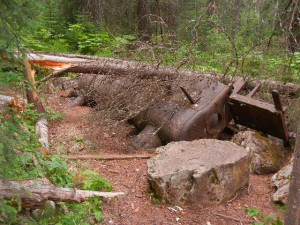
The Trans-Canada Highway also passes through Kickinghorse Pass, but there was an earlier two-lane highway that is now abandoned and closed to cars but open to bicycles. We biked on that and stopped near a large log arch over the road at the Great Divide between B.C. and Alberta. An overgrown interpretive trail from there led to a monument beside the railroad tracks (describing the kicking horse incident) and also to a small creek that divides into two branches, one flowing into the Pacific via the Columbia River and the other flowing into the Atlantic via the Saskatchewan River and Hudson Bay.
